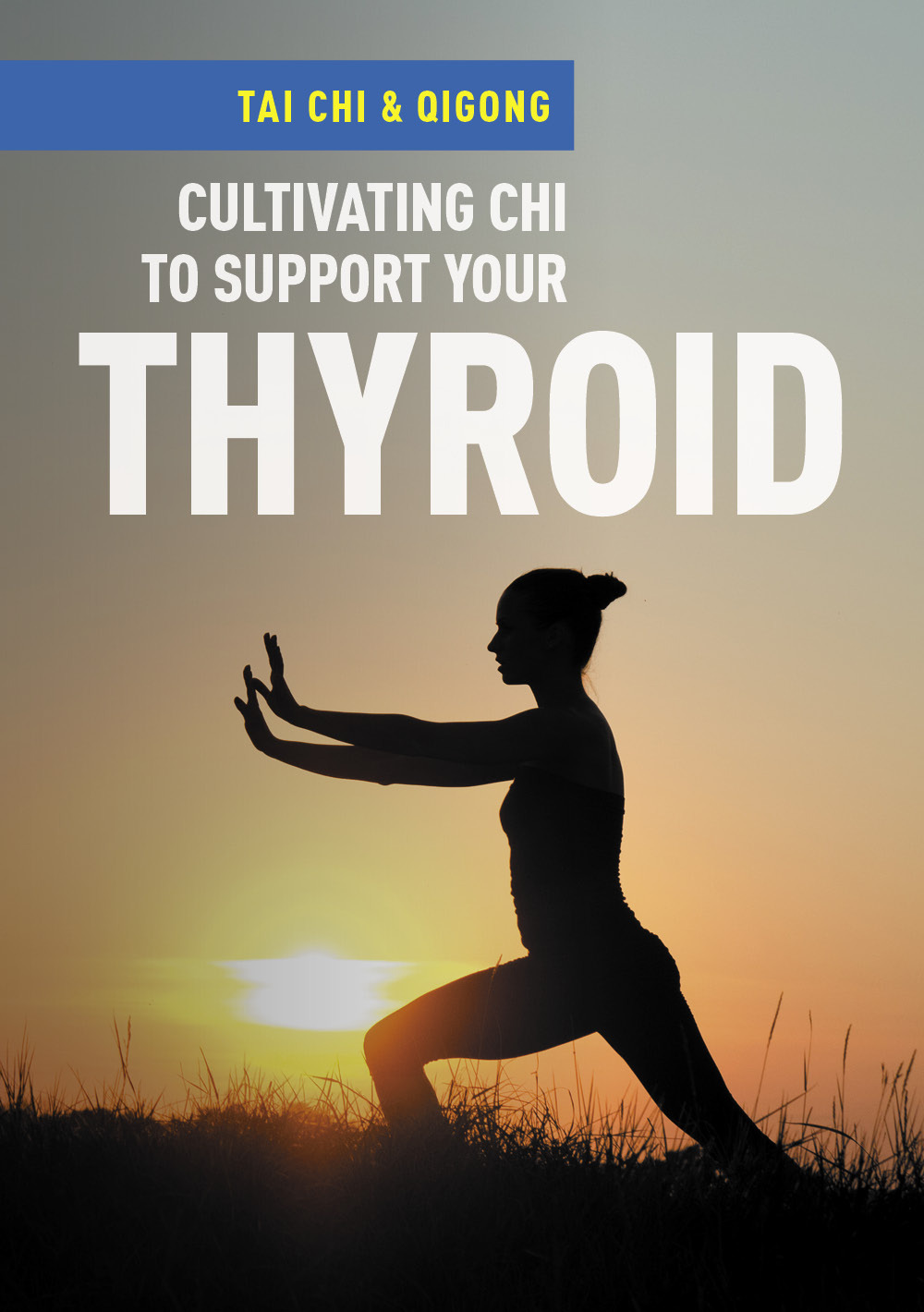Expert Advice

Acella Pharmaceuticals, LLC, is partnering with Ericca Burke, a board-certified licensed acupuncturist, to bring greater awareness to the importance of thyroid care and education. This post was sponsored by Acella Pharmaceuticals and should not be construed as medical advice. Please talk to your doctor about your individual medical situation.
What is Chi?
Chi (pronounced “chee”) is a Chinese word that translates to life force or energy. Chi runs through everyone and everything. It can be thought of as an energetic current that flows through the body as well as physical objects. Overall vitality and well-being are reflected in the chi.
It is common to see this word spelled in a variety of ways in pinyin. Pinyin translates to “spell sound” and refers to the translation of Chinese characters into the letters of the English alphabet. In this case, the sound made by the Chinese word for life force or energy sounds like a “Ch” or “Q” sound. The word is most typically written as “Chi” or “Qi”.
Just as there are various ways to spell the Chinese word for energy, there are also similar words used in other countries for this kind of energy. For example, the equivalent Japanese word is “ki.” In India, the word “prana” is used to describe one’s life force.
Benefits of building your chi
Working with your chi can strengthen your vitality. If someone is vibrantly healthy, they have strong chi. When chi is weak or stagnant, it can result in illness or disease. Many people love working with their chi because it is a simple, effective, rewarding and low-cost way to promote health and well-being. It benefits mental, physical and emotional health. It can help lower stress and raise immunity.
Many practices that focus on the cultivation of chi are simple to learn. They can be done anywhere. They can be practiced alone or with a group. Anyone at any age or level of health can work on strengthening their chi.
Qigong
Qigong is one of the fundamental pillars of Chinese medicine. As mentioned earlier, the word “qi” refers to energy or life force. The word “gong” in this case refers to work or practice. Qigong is a practice of working with energy. It combines gentle movements with mindful breathing that balance and move energy. Qigong movements can be practiced individually or combined into a flow. Here is an great instructional video for beginners, from one of my favorite teachers, David Coon:
Tai Chi
Tai Chi was developed from Qigong movements as a martial art. It was created by Shaolin monks and Chinese military leaders. There are different forms and styles that have been developed over time. Some are slower and more meditative, while others are more vigorous and geared toward self-defense and combat.
One of the underlying principles of Tai Chi is the balance of opposites, specifically yin and yang. Yin is more soft, cool and nurturing, while yang is more hard, warm and active. The flows are designed to balance yin and yang so they work together in harmony. The balance of these opposing forces creates peace, tranquility and balanced chi in the body.
Cultivating chi to support the thyroid
There are many options for cultivating your chi to support your thyroid. Depending on your time and level of interest, you might look for simple exercises that can be done at home or even find a class or or study with a master. There are a variety of books and DVDs that teach how to practice qigong and Tai Chi, as well as free instructional videos on YouTube. Another personal favorite of mine is this video from Lee Holden, on natural ways to increase vitality:
One simple option for cultivating qi that can support the thyroid can be done standing, sitting or even lying down. It is based on the principle that where your attention goes, your energy flows. To practice this option, get comfortable in your preferred position and gently place your hand on the front of your neck and over your thyroid. Direct your breath to your thyroid. You might even feel your hand slightly move as it follows the gentle expansion of your neck as you inhale and then again with the gentle contraction of your exhalation. It helps to close your eyes or fix your gaze gently as you breathe to help your concentration stay on your thyroid. If you like, you might choose to envision golden light filling your thyroid with healing chi. Continue this breathing for as long as it feels comfortable. Even as little as one minute can be beneficial.
A more active option is to practice a qi gong exercise called “knocking on the door of life.” This exercise strengthens the chi in the kidneys, and it is beneficial to thyroid health because the kidneys are associated with the thyroid in Chinese medicine. To practice this exercise, stand with your feet shoulder width apart. Begin turning lightly from your hips and waist. Let the arms stay relaxed and follow the movement of the hips while the hands lightly knock against the lower abdomen and the back of the waist where the kidneys are located. The hand from the front arm will gently knock against the lower abdomen while the hand from the back arm gently knocks against the back of the waist. Take deep breaths into the abdomen while performing this movement. This can be done for a few seconds or even a few minutes.
Practice within your level of comfort and ability. If you choose to pursue a more vigorous option, be sure to check with your doctor first to make sure that it is appropriate for you.

Note that DTE products, including NP Thyroid®, have not been reviewed by the FDA for safety or efficacy.
IMPORTANT RISK INFORMATION, INCLUDING BOXED WARNING & INDICATIONS
Important Risk Information
Drugs with thyroid hormone activity, alone or together with other therapeutic agents, have been used for the treatment of obesity. In euthyroid patients, doses within the range of daily hormonal requirements are ineffective for weight reduction. Larger doses may produce serious or even life-threatening manifestations of toxicity, particularly when given in association with sympathomimetic amines such as those used for their anorectic effects.
- NP Thyroid® is contraindicated in patients with uncorrected adrenal insufficiency, untreated thyrotoxicosis, and hypersensitivity to any component of the product.
- In the elderly and in patients with cardiovascular disease, NP Thyroid® should be used with greater caution than younger patients or those without cardiovascular disease.
- Use of NP Thyroid® in patients with diabetes mellitus or adrenal cortical insufficiency may worsen the intensity of their symptoms.
- The therapy of myxedema coma requires simultaneous administration of glucocorticoids.
- Concomitant use of NP Thyroid® with oral anticoagulants alters the sensitivity of oral anticoagulants. Prothrombin time should be closely monitored in thyroid-treated patients on oral anticoagulants.
- In infants, excessive doses of NP Thyroid® may produce craniosynostosis.
- Partial loss of hair may be experienced by children in the first few months of therapy but is usually transient.
- Adverse reactions associated with NP Thyroid® therapy are primarily those of hyperthyroidism due to therapeutic overdosage.
- Many drugs and some laboratory tests may alter the therapeutic response to NP Thyroid ®. In addition, thyroid hormones and thyroid status have varied effects on the pharmacokinetics and actions of other drugs. Administer at least 4 hours before or after drugs that are known to interfere with absorption. Evaluate the need for dose adjustments when regularly administering within one hour of certain foods that may affect absorption.
- NP Thyroid® should not be discontinued during pregnancy, and hypothyroidism diagnosed during pregnancy should be promptly treated.
Indications
NP Thyroid® (thyroid tablets, USP) is a prescription medicine that is used to treat a condition called hypothyroidism from any cause, except for cases of temporary hypothyroidism, which is usually associated with an inflammation of the thyroid (thyroiditis). It is meant to replace or supplement a hormone that is usually made by your thyroid gland.
NP Thyroid® is also used in the treatment and prevention of normal functioning thyroid goiters, such as thyroid nodules, Hashimoto’s thyroiditis, multinodular goiter, and in the management of thyroid cancer.
Revised
10/2023
You Are About To Leave This Website
By clicking continue, this link will take you to a website to which Alora Pharmaceuticals’ Policies & Terms of Use do not apply.
